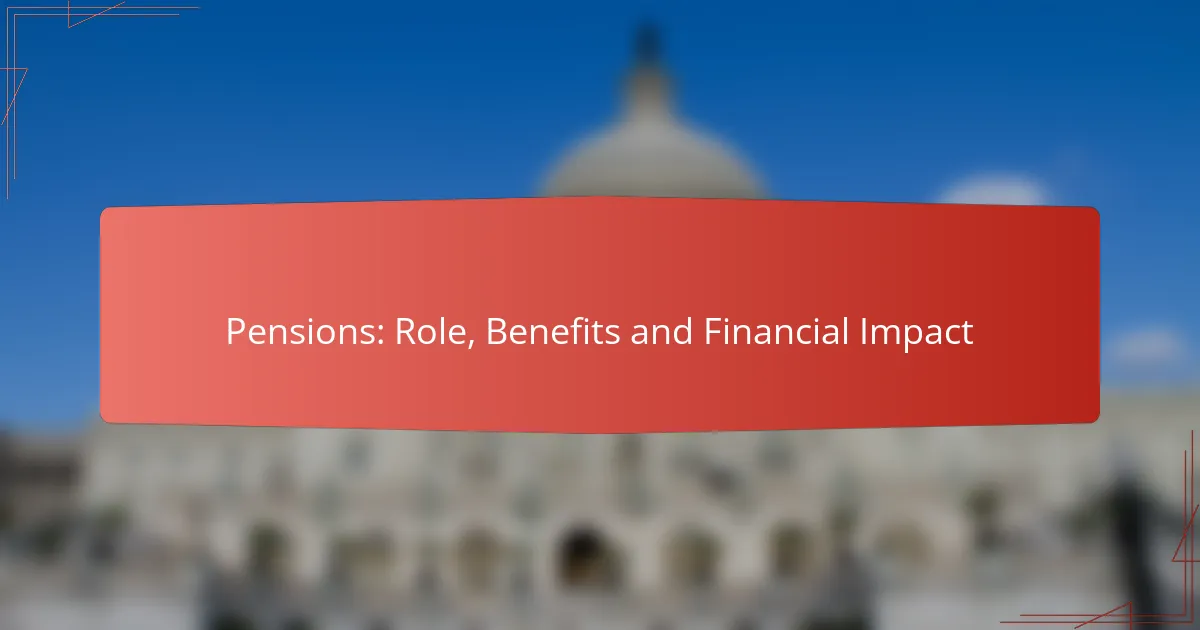Lobbying fees in the United States can range from tens of thousands to several million dollars annually, depending on the complexity of the issues and the lobbying firm involved. These financial contributions play a crucial role in influencing legislation, as they provide support to lawmakers and political campaigns, often leading to favorable outcomes for the contributors. Recent trends show a growing investment in lobbying efforts, highlighting the increasing recognition of its impact on policy-making and regulatory frameworks.
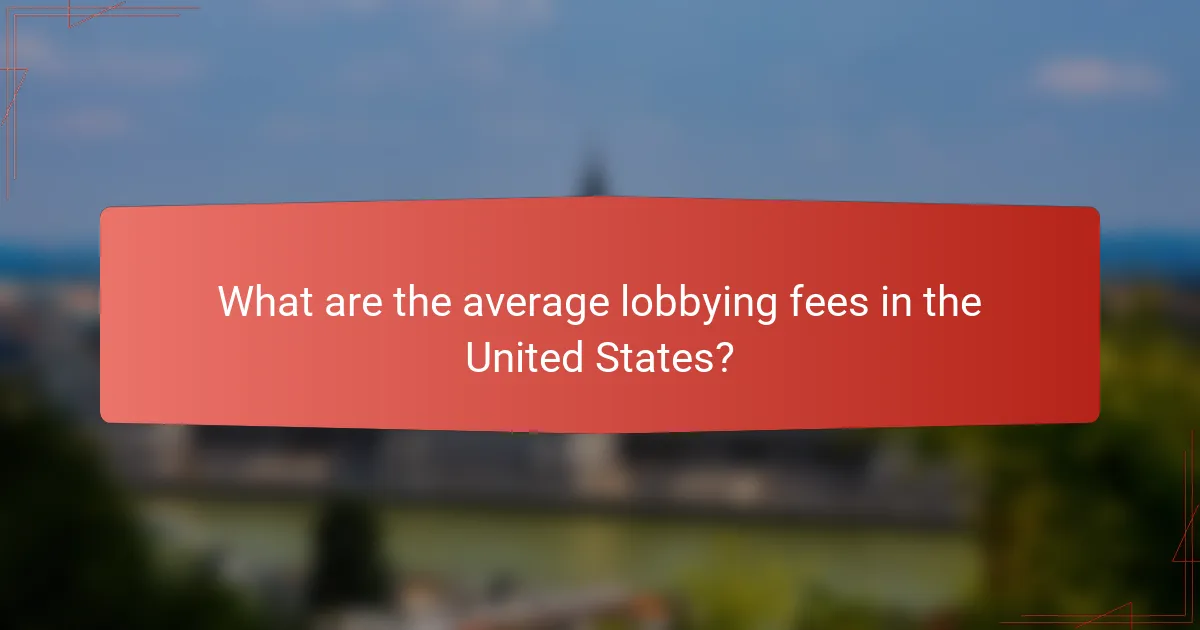
What are the average lobbying fees in the United States?
The average lobbying fees in the United States typically range from tens of thousands to several million dollars annually, depending on the firm and the complexity of the issues involved. These fees reflect the costs associated with hiring lobbyists to influence legislation and policy decisions at various government levels.
Average annual fees for top firms
Top lobbying firms in the U.S. often charge annual fees that can exceed $1 million, especially for comprehensive services. For instance, firms like Akin Gump and Brownstein Hyatt Farber Schreck frequently report fees in the high six-figure to low seven-figure range. Smaller firms may charge significantly less, often starting around $50,000 to $100,000 per year.
Comparison of fees by industry
Lobbying fees can vary widely by industry due to the differing levels of regulatory complexity and competition. For example, the healthcare and pharmaceutical sectors tend to invest heavily in lobbying, with average fees often reaching or exceeding $1 million annually. In contrast, industries like agriculture or technology may see lower average fees, typically ranging from $200,000 to $600,000.
Regional variations in lobbying costs
Lobbying costs can also differ significantly based on geographic location. In Washington D.C., where many top firms are located, fees are generally higher due to the concentration of political activity and expertise. In other regions, such as state capitals, fees may be lower, often ranging from $50,000 to $300,000, reflecting the local political landscape and the scope of lobbying efforts.
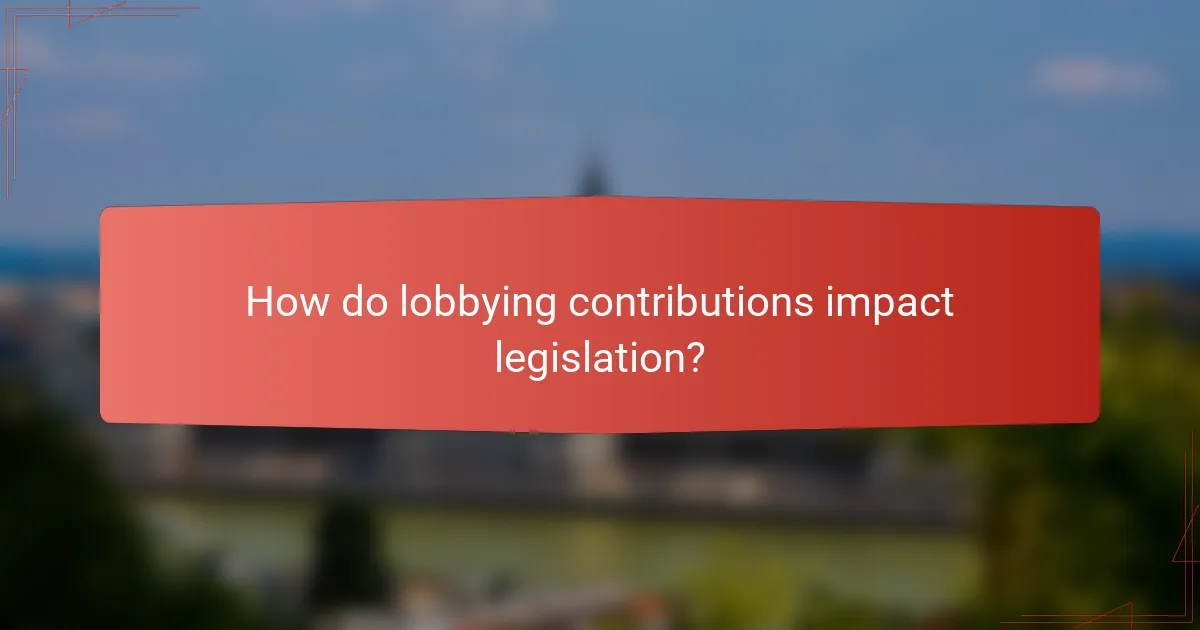
How do lobbying contributions impact legislation?
Lobbying contributions significantly influence legislation by providing financial support to lawmakers and political campaigns, which can lead to favorable outcomes for the contributors’ interests. This dynamic creates a relationship where legislators may prioritize the agendas of their financial backers, potentially shaping policy decisions and regulatory frameworks.
Case studies of successful lobbying efforts
One notable case is the lobbying by the pharmaceutical industry, which has successfully influenced drug pricing regulations in the United States. By contributing millions to political campaigns and lobbying efforts, these companies have managed to maintain high prices for medications despite public outcry for reform.
Another example is the National Rifle Association (NRA), which has effectively lobbied against gun control legislation. Through substantial contributions and grassroots mobilization, the NRA has shaped legislative outcomes that favor gun rights, demonstrating the power of organized lobbying efforts.
Statistical correlation between contributions and legislative outcomes
Research indicates a strong correlation between lobbying contributions and legislative success. Studies show that legislators who receive higher contributions from lobbyists are more likely to support bills that align with the interests of those contributors, often exceeding a 70% approval rate on related legislation.
Moreover, a significant portion of lobbying expenditures is directed towards key committees that influence policy areas. For instance, contributions to members of the House and Senate committees overseeing healthcare can lead to favorable legislation for health-related industries, illustrating the impact of targeted financial support.
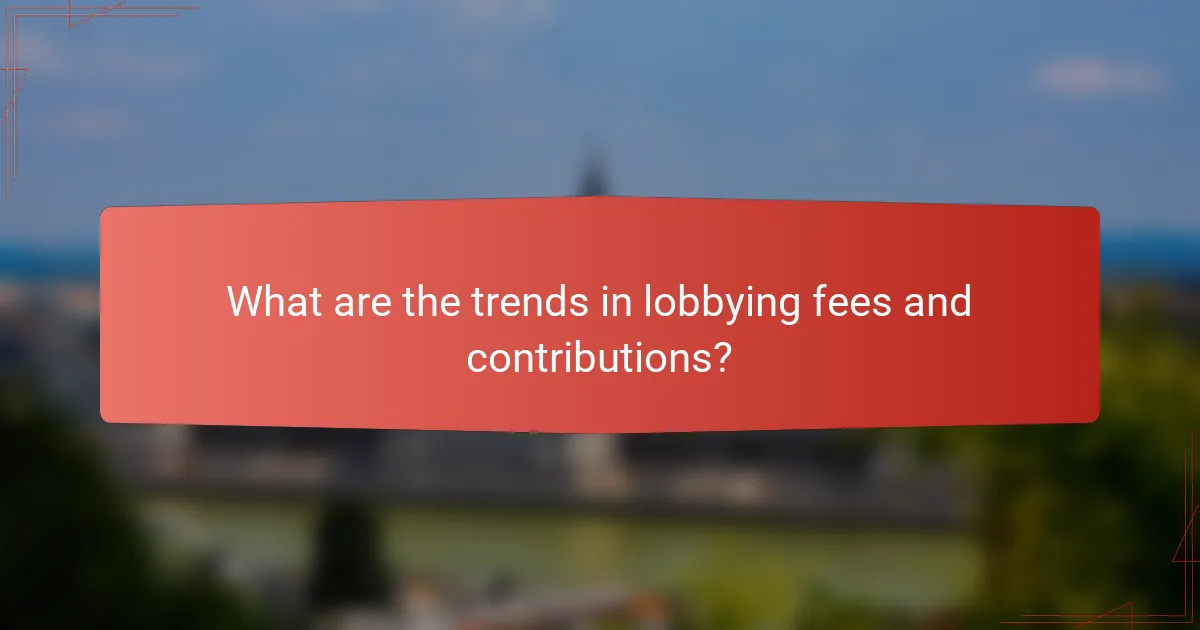
What are the trends in lobbying fees and contributions?
Trends in lobbying fees and contributions indicate a growing investment in advocacy efforts across various sectors. This increase reflects a heightened awareness of the influence lobbying can have on policy-making and regulatory outcomes.
Recent increases in lobbying expenditures
In recent years, lobbying expenditures have seen significant growth, with total spending often reaching hundreds of millions of USD annually. This surge is driven by a variety of factors, including increased political polarization and the need for industries to protect their interests amid changing regulations.
For example, industries such as technology and healthcare have ramped up their lobbying budgets, often spending tens of millions to influence legislation that directly impacts their operations. Companies are increasingly hiring specialized firms to navigate complex regulatory environments, further contributing to rising costs.
Emerging industries and their lobbying strategies
New industries, such as renewable energy and cryptocurrency, are developing unique lobbying strategies to establish their presence in the political landscape. These sectors often focus on building coalitions with established organizations to amplify their voices and share resources.
For instance, renewable energy companies frequently collaborate with environmental groups to advocate for favorable policies, while cryptocurrency firms may engage in direct outreach to lawmakers to educate them about the benefits of blockchain technology. Tailoring their approaches to resonate with specific political agendas is crucial for these emerging industries.
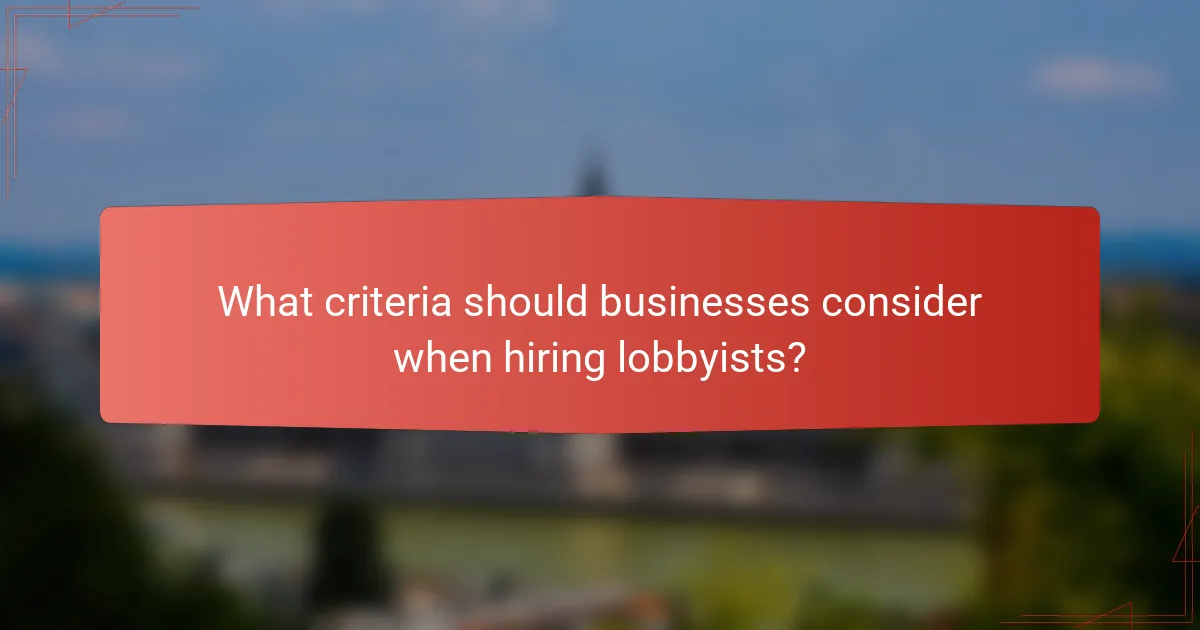
What criteria should businesses consider when hiring lobbyists?
Businesses should consider several key criteria when hiring lobbyists, including the firm’s expertise, reputation, and alignment with their specific goals. Understanding the regulatory environment and the lobbyist’s connections can significantly impact the effectiveness of their advocacy efforts.
Key factors in selecting a lobbying firm
When selecting a lobbying firm, businesses should prioritize the firm’s experience in their industry and its understanding of relevant regulations. A firm with a proven track record in similar sectors is more likely to navigate complex legislative landscapes effectively.
Additionally, consider the firm’s network of relationships with key policymakers and stakeholders. Strong connections can facilitate access and influence, which are crucial for successful lobbying efforts.
Cost is another important factor; firms may charge varying fees based on their expertise and the scope of services provided. Businesses should evaluate their budget and seek firms that offer clear, transparent pricing structures.
Evaluating lobbyist track records
Evaluating a lobbyist’s track record involves reviewing their past successes and the outcomes of their advocacy efforts. Look for documented cases where the lobbyist has influenced legislation or policy decisions favorably for their clients.
Additionally, consider client testimonials and references. Positive feedback from previous clients can provide insights into the lobbyist’s effectiveness and professionalism.
Finally, assess the lobbyist’s understanding of the current political climate and their ability to adapt strategies accordingly. A lobbyist who stays informed about trends and shifts in policy can offer more relevant and timely guidance.

How do lobbying fees compare across different states?
Lobbying fees vary significantly across states, influenced by local regulations, political climates, and the scale of lobbying activities. States like California and Texas often see higher expenditures due to their larger economies and more active political environments.
Top states for lobbying expenditures
California, Texas, and New York consistently rank as the top states for lobbying expenditures. In these states, annual lobbying fees can reach into the hundreds of millions of dollars, reflecting the high stakes of legislative influence. For example, California alone reported lobbying expenditures exceeding $300 million in recent years.
Other notable states include Florida and Pennsylvania, which also see substantial lobbying activities. These states typically have expenditures in the range of tens of millions to low hundreds of millions, driven by various industries seeking to influence state policies.
State-specific regulations affecting lobbying fees
Each state has its own regulations governing lobbying fees, which can impact how much organizations spend. For instance, some states require lobbyists to register and disclose their expenditures, while others have fewer restrictions. This can lead to variations in reported fees and transparency levels.
Additionally, states like New York impose strict limits on gifts and contributions from lobbyists to lawmakers, which can indirectly affect lobbying costs. Understanding these regulations is crucial for organizations planning their lobbying budgets, as compliance can incur additional administrative costs.
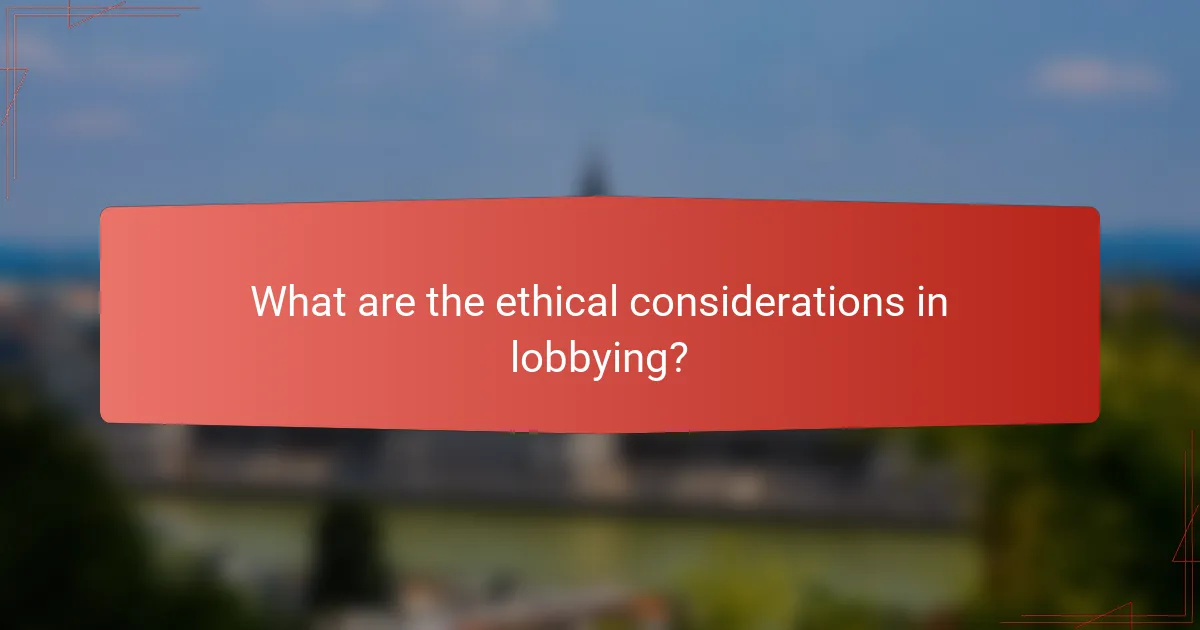
What are the ethical considerations in lobbying?
Ethical considerations in lobbying focus on the integrity of the process, ensuring that it is transparent and accountable. Key aspects include adherence to regulations, the necessity of disclosure, and the impact of lobbying on public trust in governance.
Transparency and disclosure requirements
Transparency in lobbying involves clear communication about who is lobbying, on whose behalf, and for what purpose. Many jurisdictions require lobbyists to register and disclose their activities, including financial contributions and the specific issues they are advocating for.
For example, in the United States, the Lobbying Disclosure Act mandates that lobbyists file reports detailing their expenditures and the clients they represent. This helps maintain a level of accountability and allows the public to scrutinize lobbying efforts.
Public perception of lobbying practices
Public perception of lobbying is often mixed, with many viewing it as a necessary part of democracy while others see it as a means for special interests to unduly influence policy. Negative perceptions can arise from scandals or instances of corruption, leading to calls for stricter regulations.
To improve public trust, lobbyists can engage in ethical practices such as being upfront about their intentions and ensuring that their activities align with the public interest. Building relationships with community stakeholders can also help mitigate skepticism and foster a more positive image.
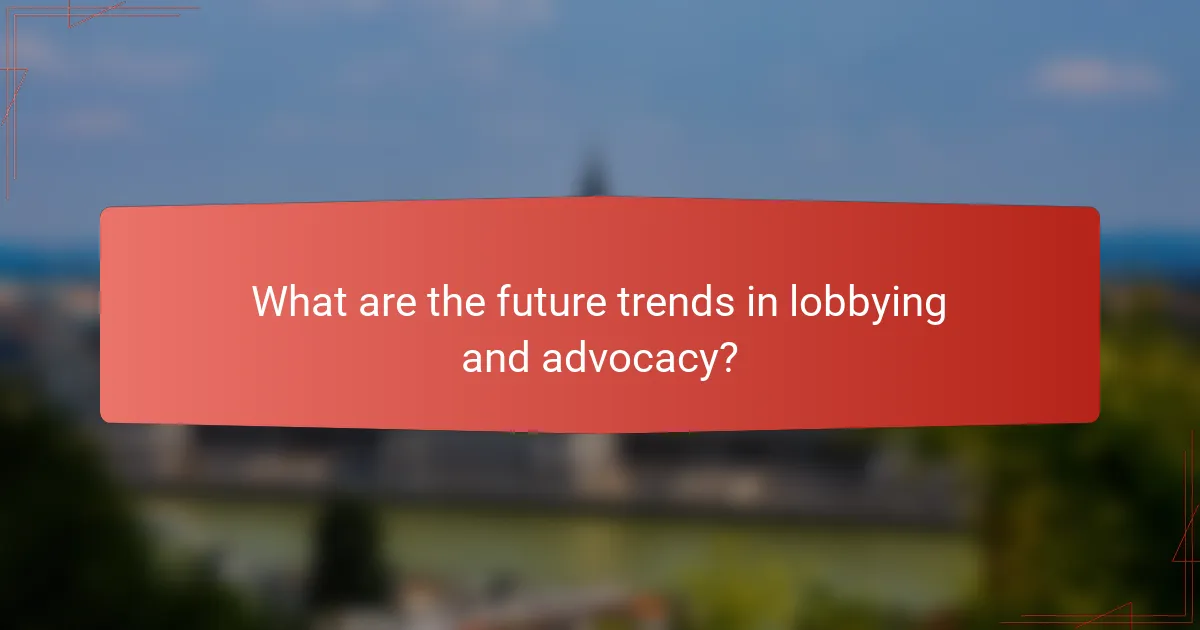
What are the future trends in lobbying and advocacy?
Future trends in lobbying and advocacy are increasingly shaped by technology, transparency demands, and evolving public sentiment. As stakeholders seek more engagement and accountability, strategies will adapt to leverage digital tools and data-driven insights.
Impact of technology on lobbying strategies
Technology is transforming lobbying strategies by enabling more efficient communication and data analysis. Digital platforms allow lobbyists to engage with lawmakers and the public in real-time, fostering a more interactive approach to advocacy.
Data analytics play a crucial role in identifying key influencers and understanding public sentiment. By analyzing social media trends and public opinion, lobbyists can tailor their messages and target their efforts more effectively, increasing the likelihood of success.
However, reliance on technology also presents challenges. Lobbyists must navigate issues related to data privacy and misinformation, ensuring their strategies remain ethical and compliant with regulations. Staying informed about the latest tools and best practices is essential for effective advocacy in this evolving landscape.



